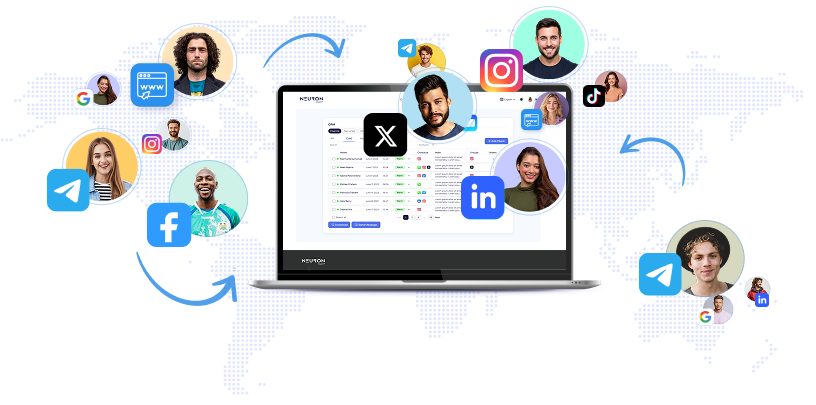
Delivering ROI on telco marketing campaigns has become increasingly difficult due to tightening budgets, higher boardroom expectations, and intensified competition from traditional rivals as well as agile MVNOs and challenger brands. Marketing leaders now face the dual challenge of achieving short-term results while simultaneously building long-term brand equity. CFOs typically view marketing spend purely through the lens of predictable ROI, so if marketing fails to demonstrate clear returns, it is often seen as a cost center rather than a growth driver. Consequently, marketing teams must consistently prove short-term impact, especially as they invest in personalized, AI-driven engagement strategies that demand transparency and predictability. Imagine if telco marketers could break the cycle of unreliable forecasts by providing confident, data-backed predictions such as: “Increasing spend by 20% on postpaid customers will generate over $3 million in incremental revenue — and here’s how we’ll verify it. ” This is precisely the kind of clarity CFOs want, and AI-powered forecasting makes this achievable. Traditionally, campaign planning has been reactive—simply replicating past tactics that appeared successful. However, shifting conditions, evolving customer behaviors, competitor moves, and new market offers mean yesterday’s successes may fail today. The shift needed is from asking “What worked?” to “What should we do next, and how certain are we about it?” This is where AI-driven KPI forecasting is transformative. Using AI-powered KPI forecasting tools, marketing teams can simulate campaign outcomes before spending, testing different offers, channels, and audience segments. This allows identification of underperforming combinations and optimization of messaging and timing, reducing risk and maximizing performance even before a campaign launches. Scenario planning further enhances smarter spending by modeling multiple “what-if” scenarios, enabling marketers to remain resilient amid unexpected changes. In telecoms, this is especially critical given the persistent threat of customer churn. For example, a mobile operator facing rising churn in its high-value postpaid segment traditionally blasted broad retention offers like discounts and free data, which wasted budget on loyal customers and missed those at risk of leaving.
Instead, by building AI and machine learning models analyzing usage, billing, service interactions, and past offer responses, the operator can test three sample retention offers: 10GB free data for three months, a 15% monthly bill discount for one month, or a free video streaming subscription with zero-rated data. AI forecasting can simulate revenue and cost outcomes for each, allowing the operator to select the highest-ROI strategy before launching any campaign. Moreover, modern AI forecasting enables testing numerous campaign variants across refined subsegments and niche audiences to identify highly personalized and effective offers. This capability helps CSPs reconcile customer-centric marketing approaches with corporate efficiency and productivity goals. Modern KPI forecasting solutions offer dynamic, adjustable what-if scenarios covering audience, offers, budgets, and channels; AI-powered modeling based on historical campaign data and segment trends; instant visualization of predicted metrics from open rates to revenue; and democratized, no-code interfaces empowering marketers—not just data scientists—to run simulations autonomously. Etiya’s new Forecast KPI feature, part of its Campaign Management product and powered by its AI platform recognized in the Gartner Magic Quadrant, exemplifies these capabilities. It converts aggregated marketing, product, and customer data into predictive business intelligence, enabling precision planning. The simulation engine, driven by advanced AI and rich historical data, estimates campaign outcomes such as opens, clicks, conversions, and revenue across multiple scenarios, allowing marketers to compare, refine, and justify budgets with data-backed insights. Importantly, the no-code interface provides marketers direct access to powerful AI-driven forecasting without requiring technical AI expertise, removing reliance on IT or data science teams. With just a few clicks, teams can model campaigns, test assumptions, and iterate rapidly. Tools like Etiya’s AI-powered Forecast KPI transition telecom marketing from reactive to predictive practice, enabling operators to optimize spend, enhance personalization, and meet CFO demands for predictable ROI—transforming marketing into a strategic growth enabler in a complex, competitive landscape.
AI-Powered KPI Forecasting Revolutionizes Telco Marketing ROI & Campaign Planning


Artificial Intelligence (AI) is profoundly transforming the digital marketing sector, particularly in Search Engine Optimization (SEO).

Oracle Corporation and AMD have announced an expanded partnership set to deploy 50,000 AMD GPUs starting in Q3 2026, forming a massive AI "supercluster" to power next-generation AI models.

Global shipowners, shipyards, and suppliers are preparing for a fresh investment cycle centered on fleet efficiency, artificial intelligence, and sustainability, according to the latest SMM Maritime Industry Report (MIR) released ahead of next year’s shipping exhibition in Hamburg.

Deepfake technology, powered by advances in artificial intelligence, has attained a sophistication level that enables the creation of highly realistic videos showing individuals saying or doing things they never actually said or did.

For more information, please visit: http://www

CoreWeave, a leading cloud computing provider specializing in AI workloads, has secured a substantial $650 million credit facility to accelerate its growth in the AI cloud computing sector.

A recent report released by the SEO company Graphite has provided new insights into the ongoing discussion about the prevalence of AI-generated content on the internet.
Automate Marketing, Sales, SMM & SEO

and get clients on autopilot — from social media and search engines. No ads needed
and get clients today